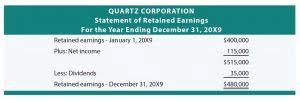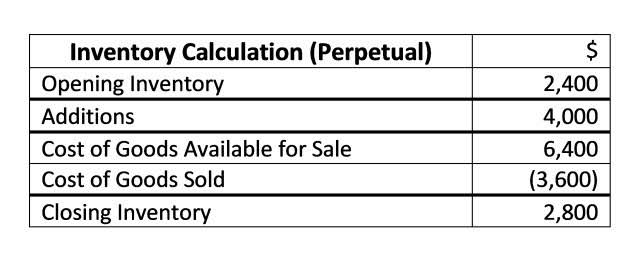
For example, a D/E ratio of 2 means a company gets two-thirds of its funding from debt and one-third from shareholders. Equity Value (also known as Market Value of Equity) is the value of a company’s shares outstanding. It reflects the portion of a business that belongs to shareholders. It refers to the stocks that have been sold total equity formula to stockholders but have not been repurchased by the company. It includes stocks that have been issued to company officers, public investors, company insiders and the like.
Key Takeaways
A positive total equity indicates that a company’s assets exceed its liabilities, suggesting a financially sound position. Conversely, a negative total equity means that a company’s liabilities are greater than its assets. This situation, sometimes referred to as a total deficit, can signal financial distress, as it implies the company owes more than the value of everything it owns. Total Equity is a vital component of a company’s balance sheet, sitting alongside total liabilities and total assets. It helps investors understand the company’s financial health and is a primary factor in various financial ratios, including Return on Equity (ROE) and Debt to Equity Ratio (D/E). These figures allow for a precise shareholder equity calculation, offering an overview of the owners’ stake.
Calculating Total Equity
Common stock is the basic unit of ownership in a corporation, granting shareholders voting rights to influence corporate decisions like electing the board of directors. The balance sheet value of common stock is calculated by multiplying the par value by the number of shares issued. While par value is often nominal, it establishes the minimum price at which shares may be issued. The market value of common stock fluctuates based on investor perceptions and market conditions.
Why is average shareholders’ equity used in ROE calculation?

Accounts Payables, or AP, is the amount a company owes suppliers for items or services purchased on credit. As the company pays off its AP, it decreases along with an equal amount decrease to the cash account. Welcome to the Value Sense Blog, your resource for insights on the stock market! At Value Sense, we focus on intrinsic value tools and offer stock ideas with undervalued companies. Dive into our research products and learn more about our unique what are retained earnings approach at valuesense.io.
- If this figure is positive, the company has sufficient assets to cover its liabilities.
- With a low equity base, the company may be struggling with its debt levels, making it harder to secure loans or attract investors.
- Under a hypothetical liquidation scenario in which all liabilities are cleared off its books, the residual value that remains reflects the concept of shareholders equity.
- All of the above ratios and metrics are covered in detail in CFI’s Financial Analysis Course.
- Stockholders’ equity, also known as shareholder equity, is the total amount of assets that a company would retain if it paid all of its debts.
This calculation helps investors and stakeholders understand the financial health and stability of a company. Conversely, a negative total equity figure signifies that liabilities are greater than assets. For an individual, this suggests a concerning financial situation where debts outweigh possessions, potentially leading to instability or difficulty in meeting obligations. In a business context, negative shareholder equity indicates insolvency, meaning the company’s debts surpass its assets. Many investors view companies with negative shareholder equity as risky or unsafe investments.
- Financial equity represents the ownership interest in a company’s assets after deducting liabilities.
- Most U.S. companies build operations around a fundamental financial structure.
- Typically, investors view companies with negative shareholder equity as risky or unsafe investments.
- This forms the foundation of shareholder value creation in the portfolio construction process.
- This portion of profits is reinvested into operations, asset acquisition, or debt reduction, contributing to the company’s growth.
Treasury Shares

Any business owner who is serious about growing their business needs to understand equity. If you understand equity, you’ll feel confident bringing in outside investors, working with business partners, and understanding how much your “share” of the business is actually worth. Owning 5 % equity in a company means holding a 5% ownership or share of the company’s total value. VJM Global helps U.S. businesses and CPA firms maintain accurate financial records for clear equity reporting. We handle bookkeeping, balance sheet preparation, and https://relybd.com/pricing-wholesale-billing/ equity reconciliation to ensure your financials are audit-ready and GAAP-compliant.

Incorporate and issue stock
For example, a high d/e ratio might not be bad if other companies in the same field have similar numbers. In Q2 of 2022, the US’s d/e ratio was 83.3%, showing a lot of debt across different industries. For more advanced analysis (Enterprise Value to Equity Value), you may also subtract debt and add cash, but this article focuses on the market value of equity only. Investors should, thus, consider shareholder’s equity alongside other relevant metrics to obtain a holistic idea about an organisation’s financial standing. There is a specific formula that can be utilised to know how to calculate shareholders’ equity.
Understanding Shareholders’ Equity
- The company’s stockholders are usually interested in the stockholder’s equity, and they are concerned about the company’s earnings.
- According to Cisco’s quarterly balance sheet ending on October 30, 2021, we can see that the equity is computed as $42,701.
- It should be paired with other metrics to obtain a more holistic picture of an organization’s standing.
- Book a call today and discover how expert financial solutions can help you scale and grow confidently in the U.S. market.
A higher level suggests that a firm has more resources to cope with challenges or make investments. A low level might imply financial vulnerability or overdependence on debt financing. Figuring out total equity requires examining various types of assets owned by a company.

Only «accredited» investors, those with a net worth of at least $1 million, can take part in private equity or venture capital partnerships. For investors who don’t meet this marker, there is the option of private equity exchange-traded funds (ETFs). A final type of private equity is a Private Investment in a Public Company (PIPE). Venture capitalists (VCs) provide most private equity financing in return for an early minority stake. Sometimes, a venture capitalist will take a seat on the board of directors for its portfolio companies, ensuring an active role in guiding the company.
Why D/E Ratio Matters in Financial Analysis
Benchmarking ROE across peers within the same sector helps distinguish market leaders from laggards. For example, if two firms operate under similar regulatory and input conditions but differ in ROE, the higher-performing entity likely holds a structural or managerial edge. This forms the foundation of shareholder value creation in the portfolio construction process.
